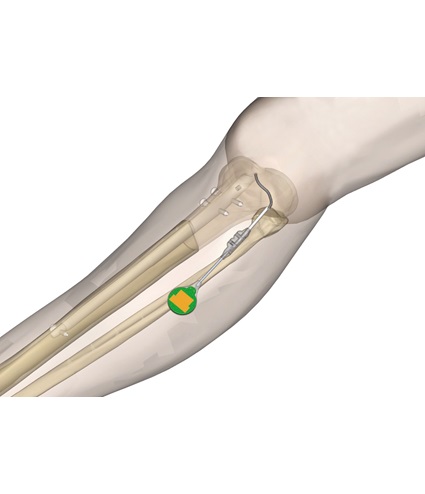
3C61
Lengthening and alignment correction of the Tibia
| * Nail and screw sizes are dependent on patient anatomy * | ||
| Q.ty | Catalogue N. | Description |
|---|---|---|
| 1 | TAA1160-T-225
|
TAA1160-T-225 FITBONE INTRAMEDULLARY LENGTHENING NAIL |
| 1 | 60000567
|
FITBONE LOCKING SCREW D4.5 L55 LONG THREAD |
| 1 | 60000369
|
FITBONE LOCKING SCREW D4.5 L50 LONG THREAD |
| 1 | 60000365
|
FITBONE LOCKING SCREW D4.5 L30 LONG THREAD |
| 1 | 60001780
|
FITBONE SUBCUTANEOUS ENERGY RECEIVER |
Array
(
[0] => Array
(
[name] => Principles of Multiplanar Deformity Analysis and Correction in Long Bone
[img] => 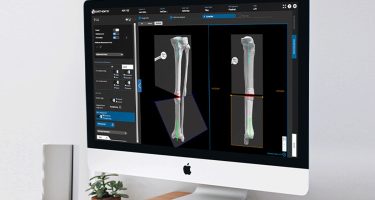 [date] => 2022-02-17
[content] =>
[date] => 2022-02-17
[content] => A multiplanar deformity analysis can be both simple and complex: a correct determination of angular and metric deformity apex and plane is a fundamental task. This is true in both the preoperative surgery planning and the postoperative management phases, in order to obtain the most accurate correction and promote the quickest recovery for the patient’s well-being.
[readmore] => Read More
[meta] =>
)
[1] => Array
(
[name] => Calculation of the True Plane of the Deformity
[img] =>  [date] => 2022-02-17
[content] =>
[date] => 2022-02-17
[content] => The initial assessment of any lower extremity deformity is fundamental to plan a successful surgical program of correction, as well as an effective post-operative management of the healing process. The assessment should include the X-rays of full length weight bearing of both legs, with a complete axis evaluation to fix the position of the deformities, which is “the true plane of the deformity”.
[readmore] => Read More
[meta] =>
)
[2] => Array
(
[name] => Acute or Gradual Correction of a Deformity?
[img] => 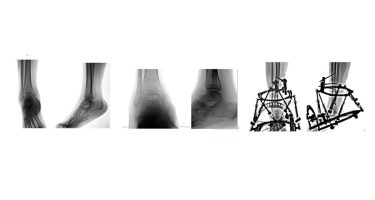 [date] => 2022-01-17
[content] =>
[date] => 2022-01-17
[content] => Although several studies have reported good results of the treatment of the lower extremity deformity combined with shortening – a condition that often means disabling impairment in the daily life activities – to date there are still very few studies that review the evidence by comparing the outcomes of acute versus gradual correction.
[readmore] => Read More
[meta] =>
)
[3] => Array
(
[name] => CORA (Center Of Rotation of Angulation)
[img] => 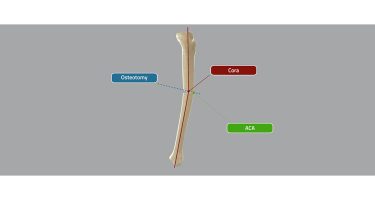 [date] => 2021-12-17
[content] =>
[date] => 2021-12-17
[content] => The term CORA (Center of Rotation of Angulation) means a method of mechanical and anatomical axis planning based on joint orientation, which has gained international recognition and acceptance. Many surgeons from all over the world apply this method to limb lengthening and deformity correction, and the CORA principles and concepts have clearly shaped both design and functionality of the last generation of external devices.
[readmore] => Read More
[meta] =>
)
[4] => Array
(
[name] => The Reverse Planning Method (RPM)
[img] => 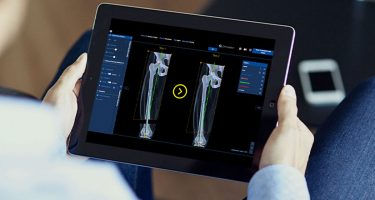 [date] => 2021-05-27
[content] =>
[date] => 2021-05-27
[content] => When an orthopedic surgeon has to perform a bone deformity correction, he or she may choose to apply an extrinsic method of correction such us an external fixator, or an intrinsic one, such us an intramedullary nail. In both cases, a surgeon will always have to consider the patient’s bone quality through three dimensional parameters: length, alignment and torsion, and accurately the entire 3D correction process. If using an intramedullary nail, an effective planning method is the Reverse Planning Method (RPM) developed by Prof. Rainer Baumgart in 2009.(1)
[readmore] => Read More
[meta] =>
)
[5] => Array
(
[name] => Basic Considerations of Deformity Correction: Anatomical and Mechanical Axis
[img] => 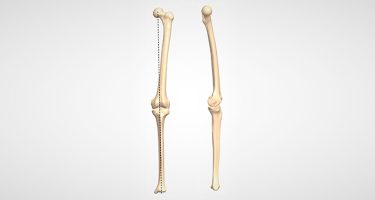 [date] => 2021-05-15
[content] =>
[date] => 2021-05-15
[content] => Bone deformity is a three-dimensional issue, considering the three-dimensional shape of bones and joints. All basic considerations of deformity correction by using an external device should include the fundamental concepts of Anatomical and Mechanical Axis. These concepts allow a better understanding of the effects of adjustments or modifications in one plane when managing a three-dimensional problem such as bone deformity.
[readmore] => Read More
[meta] =>
)
)
Array
(
[0] => lengthening
[1] => correction
[2] => fitbone
)
FROM THE BLOG

2022-02-17
A multiplanar deformity analysis can be both simple and complex: a correct determination of angular and metric deformity apex and plane is a fundamental task. This is true in both the preoperative surgery planning and the postoperative management phases, in order to obtain the most accurate correction and promote the quickest recovery for the patient’s well-being.
Read More
2022-02-17
The initial assessment of any lower extremity deformity is fundamental to plan a successful surgical program of correction, as well as an effective post-operative management of the healing process. The assessment should include the X-rays of full length weight bearing of both legs, with a complete axis evaluation to fix the position of the deformities, which is “the true plane of the deformity”.
Read MoreMORE APPLICATIONS

(a) Short tibia; LRS ADVanced (53000 series) in place; metaphyseal osteotomy performed. (b) Monofoc...
READ MORE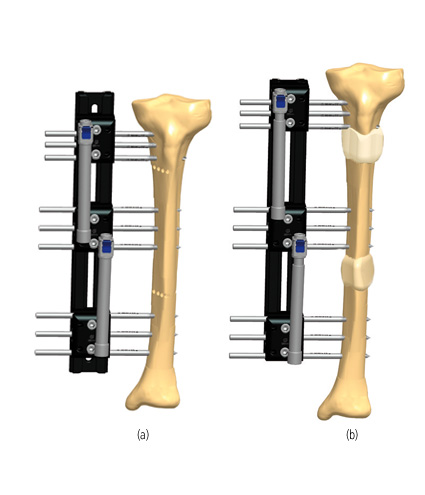
(a) Very short tibia. LRS ADVanced (53000 series) in place; proximal and distal osteotomies. (b) Si...
READ MORE
(a) Very short tibia. LRS ADVanced (53000 series) in place; proximal and distal osteotomies. (b) Si...
READ MORE
(a) Short tibia. Intramedullary nail in situ. Locking screws proximally, only. Midshaft osteotomy. L...
READ MOREMORE POSTS
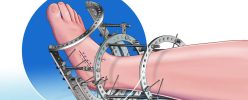
Foot and Ankle Charcot Reconstruction with External Fixation
Surgical reconstruction of foot and ankle Charcot with external fixation is especially useful in the presence of poor bone quality,Read More
Expert Tips on How to Medically Diagnose Charcot Arthropathy
The diagnosis of Charcot neuroarthropathy of the foot and ankle can be challenging due to a lack of information inRead More
